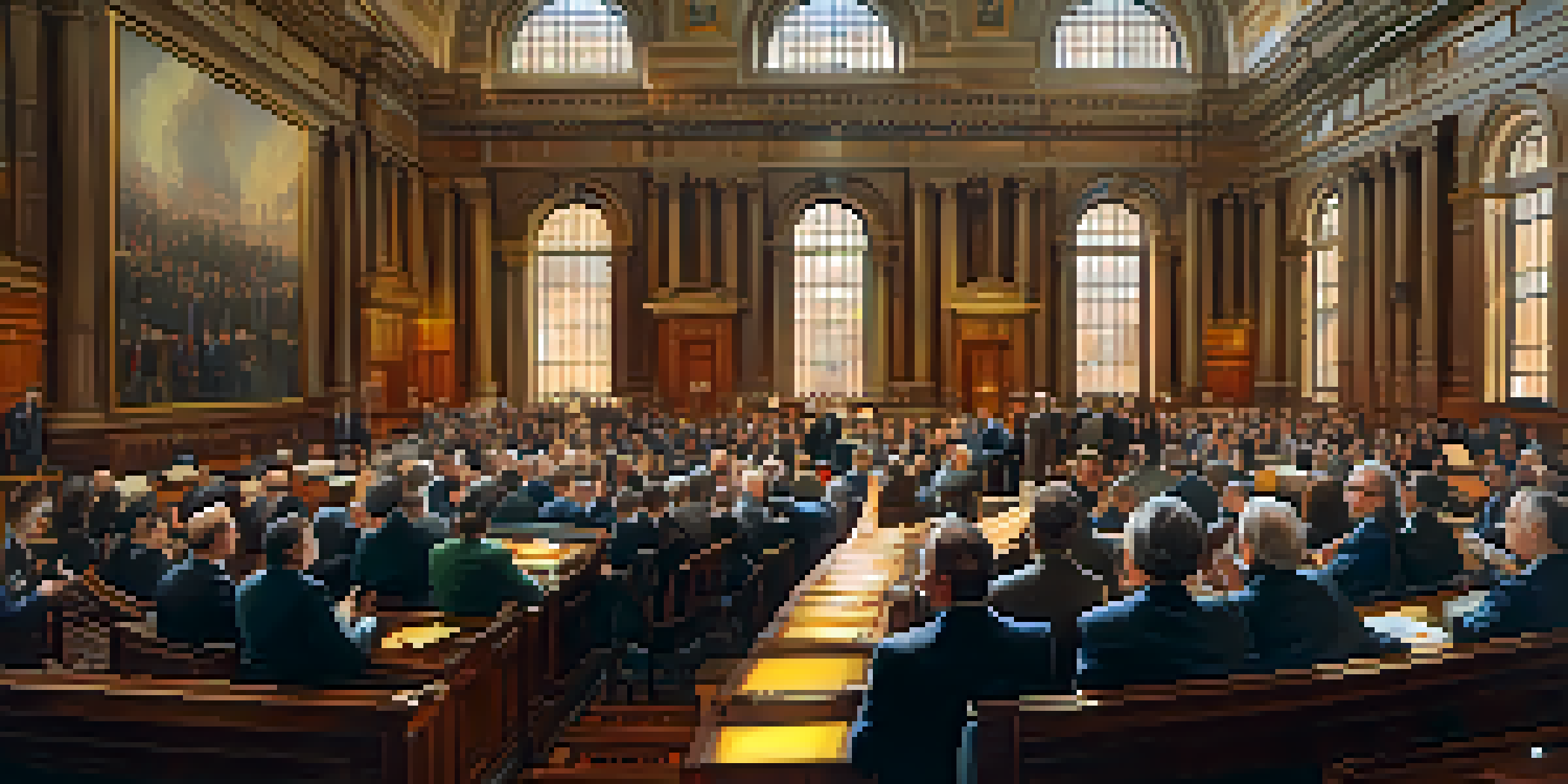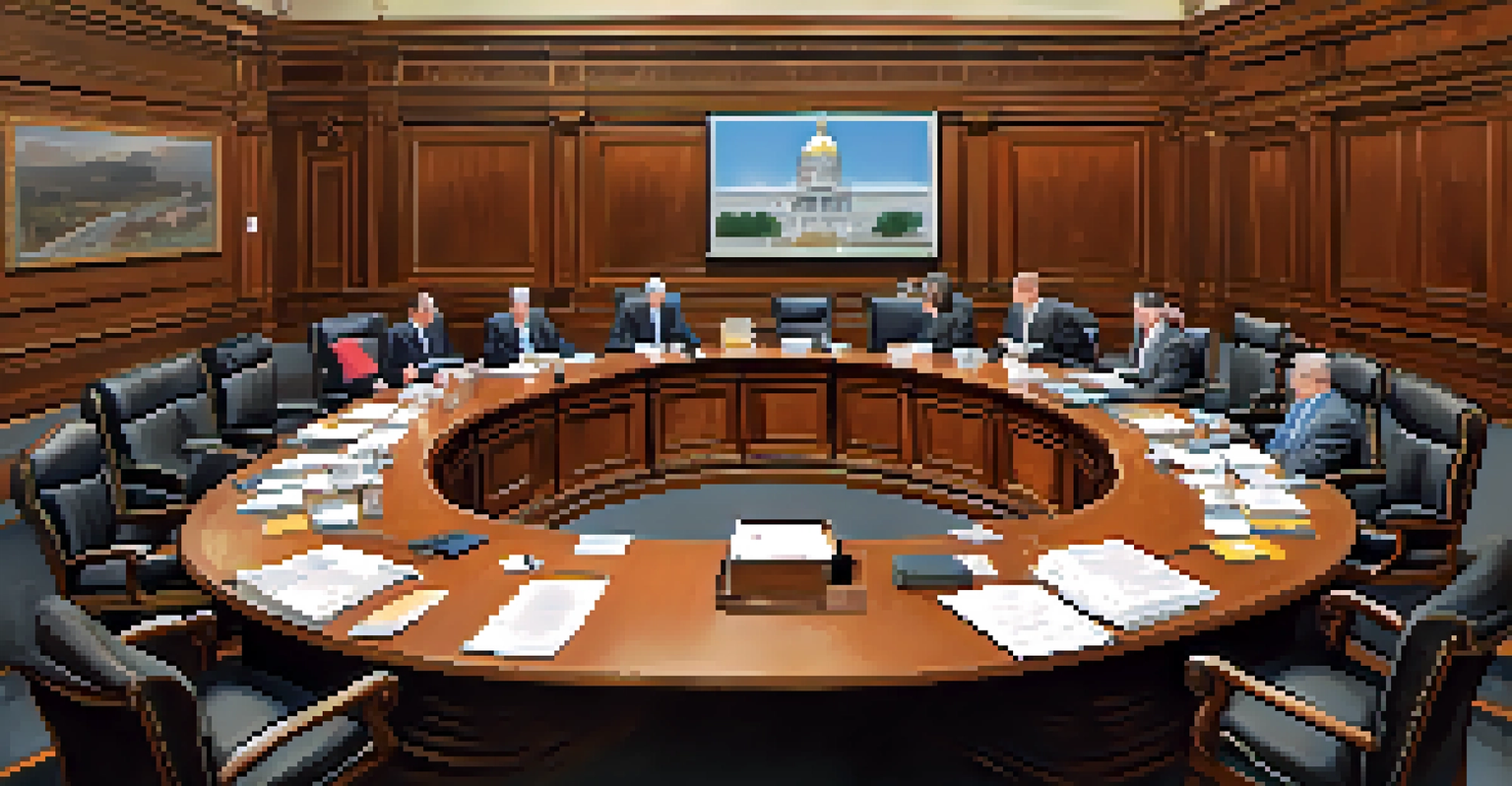New York State Legislature: Structure, Functions, and Impact

Overview of the New York State Legislature's Structure
The New York State Legislature is a bicameral body, meaning it consists of two chambers: the Senate and the Assembly. This structure allows for a checks and balances system within the state government, ensuring diverse viewpoints are represented in the law-making process. The Senate has 63 members, while the Assembly boasts 150 members, making it one of the largest legislative bodies in the country.
In a democracy, the legislative process is a vital channel through which the voices of the people are heard and represented.
Each chamber plays a distinct role, with the Senate often seen as the upper house, focusing on more significant, long-term issues, while the Assembly tends to handle more immediate concerns and local matters. This arrangement encourages collaboration and debate, fostering a more comprehensive approach to legislation that reflects the needs of New Yorkers.
Understanding this structure is crucial for anyone interested in state governance, as it directly affects how laws are proposed, debated, and enacted. The interaction between these two chambers shapes the legislative landscape and influences the overall effectiveness of the state government.
Key Functions of the New York State Legislature
The primary function of the New York State Legislature is to create and pass laws that govern the state. This process starts with the introduction of a bill, which can be proposed by any member of either chamber. Once introduced, the bill undergoes a series of discussions, amendments, and votes, ensuring that various perspectives are considered before becoming law.

In addition to law-making, the legislature has critical responsibilities such as approving the state budget, which outlines how taxpayer money will be spent. This budget approval process involves careful scrutiny and negotiation, as legislators work to balance the needs of their constituents with fiscal responsibility.
Bicameral Structure of Legislature
The New York State Legislature's two chambers, the Senate and the Assembly, ensure diverse representation and a checks and balances system in law-making.
Another important function is oversight. Legislators hold hearings and investigations to ensure that state agencies are operating effectively and efficiently. This accountability is vital for maintaining public trust and ensuring that the government serves the interests of all New Yorkers.
The Role of Committees in Legislative Processes
Committees play a vital role in the legislative process by allowing for detailed examination of proposed legislation. Each committee specializes in specific areas, such as finance, education, or health, enabling members to bring expertise and focus to their discussions. This specialization is crucial for crafting effective laws that address complex issues.
Legislation is the art of compromise, and it is essential for the health of our democracy.
When a bill is introduced, it is typically referred to a relevant committee for consideration. The committee will then hold hearings, where experts, stakeholders, and the public can provide input. This process not only enriches the legislative discussion but also helps identify potential issues before the bill is presented to the full chamber.
After thorough review and possible amendments, the committee votes on whether to advance the bill. This step is essential, as it serves as a filtering mechanism, ensuring only the most relevant and well-considered legislation moves forward in the legislative process.
How Bills Become Law in New York State
The journey of a bill becoming law in New York State is both intricate and fascinating. It begins with the introduction of a bill in either the Senate or the Assembly, followed by committee review and public hearings. If it passes through the committee stage, the bill is then scheduled for a vote in the full chamber, where it must receive a majority to proceed.
If passed by one chamber, the bill moves to the other chamber for consideration. Here, it may be debated, amended, and voted on again. If both chambers approve the bill, it is sent to the Governor, who can either sign it into law, veto it, or allow it to become law without their signature after a certain period.
Law-Making Process Explained
Bills in New York follow a multi-step process involving introduction, committee review, and votes in both chambers before becoming law.
This multi-step process ensures that legislation is thoroughly vetted and represents a consensus among elected officials. The checks and balances involved in this journey highlight the importance of collaboration and compromise in the law-making process.
The Impact of the New York State Legislature on Citizens
The New York State Legislature directly impacts the lives of millions of residents through the laws it enacts. From education to public safety, the decisions made by legislators can influence everything from school funding to criminal justice reforms. This highlights the importance of civic engagement, as constituents should stay informed and active in the legislative process.
Additionally, the legislature serves as a platform for addressing the diverse needs of New Yorkers. It allows citizens to voice their concerns and advocate for change, whether through public testimony, petitions, or direct communication with their representatives. This interaction fosters a sense of community involvement and encourages accountability among elected officials.
Ultimately, the work of the New York State Legislature shapes the state's social, economic, and environmental landscape, making it essential for citizens to understand its functions and engage with their representatives.
Challenges Facing the New York State Legislature
Like any legislative body, the New York State Legislature faces numerous challenges that can hinder its effectiveness. Partisan divides can lead to gridlock, where opposing parties struggle to find common ground on important issues. This often results in delayed legislation and frustration among constituents who are eager for change.
Another significant challenge is the influence of special interests and lobbying. While advocacy can be a vital part of democracy, it can also skew the legislative agenda, prioritizing the needs of a few over the many. Balancing these interests while ensuring fair representation is a constant struggle for legislators.
Citizen Engagement is Crucial
The legislature's actions directly affect citizens' lives, making civic engagement essential for advocating change and influencing legislative priorities.
Furthermore, the sheer volume of issues that require attention can be overwhelming. From healthcare to climate change, the legislature must tackle complex problems that often require innovative solutions. This necessitates not only collaboration but also the ability to adapt to new information and changing circumstances.
The Future of the New York State Legislature
As New York continues to evolve, so too will its legislative priorities and processes. Issues such as climate change, healthcare reform, and social justice are likely to remain at the forefront of legislative action. The ability of the legislature to adapt to these challenges will be critical in shaping the future of the state.
Moreover, the increasing role of technology in governance presents both opportunities and challenges. Digital tools can enhance transparency and citizen engagement, but they also raise concerns about data privacy and security. The legislature will need to navigate these complexities while ensuring that technology serves the public interest.

Ultimately, the future of the New York State Legislature hinges on its commitment to collaboration, innovation, and responsiveness to the needs of its constituents. By fostering an inclusive environment where diverse voices are heard, the legislature can continue to effectively serve the people of New York.